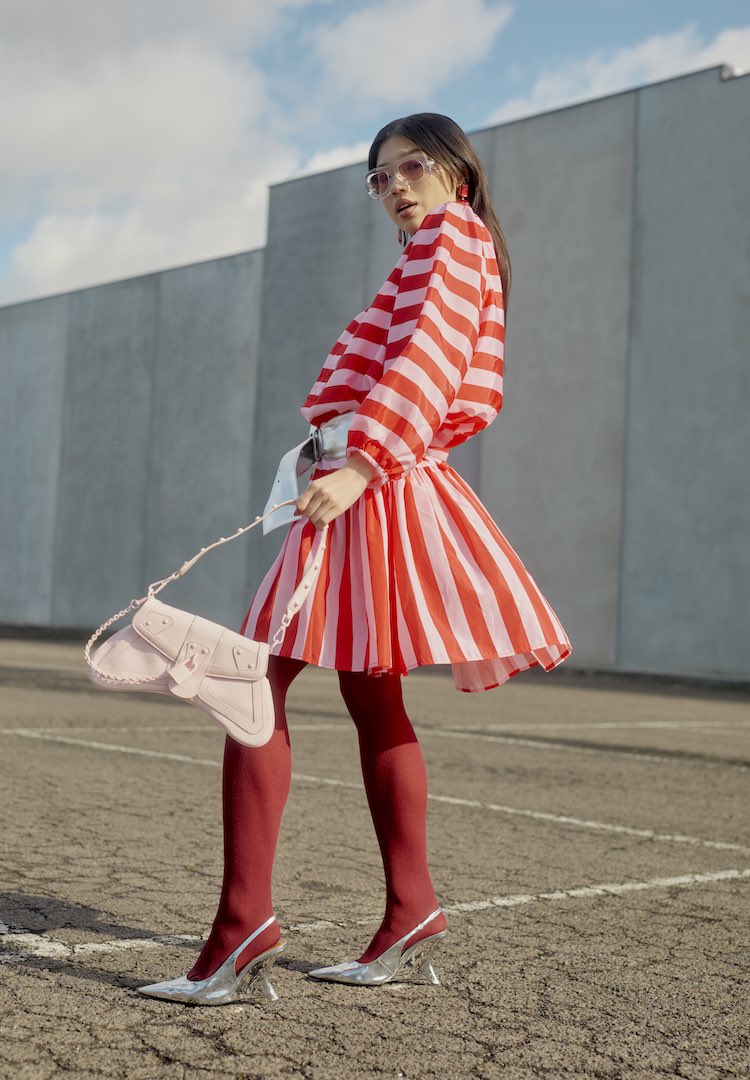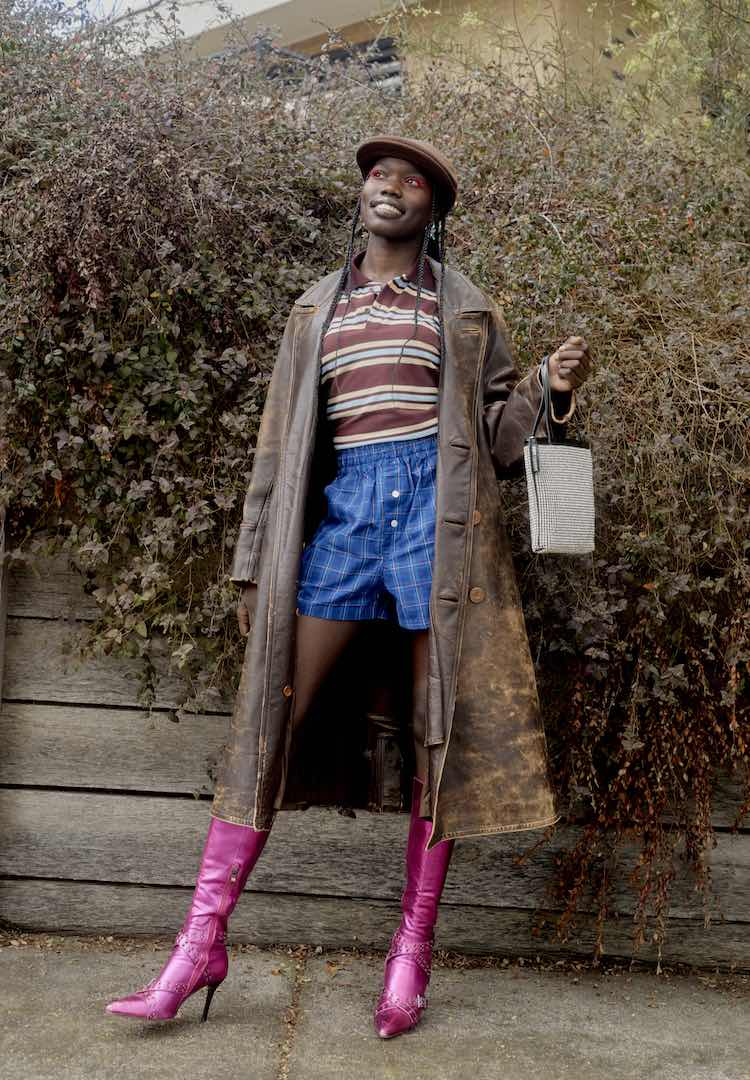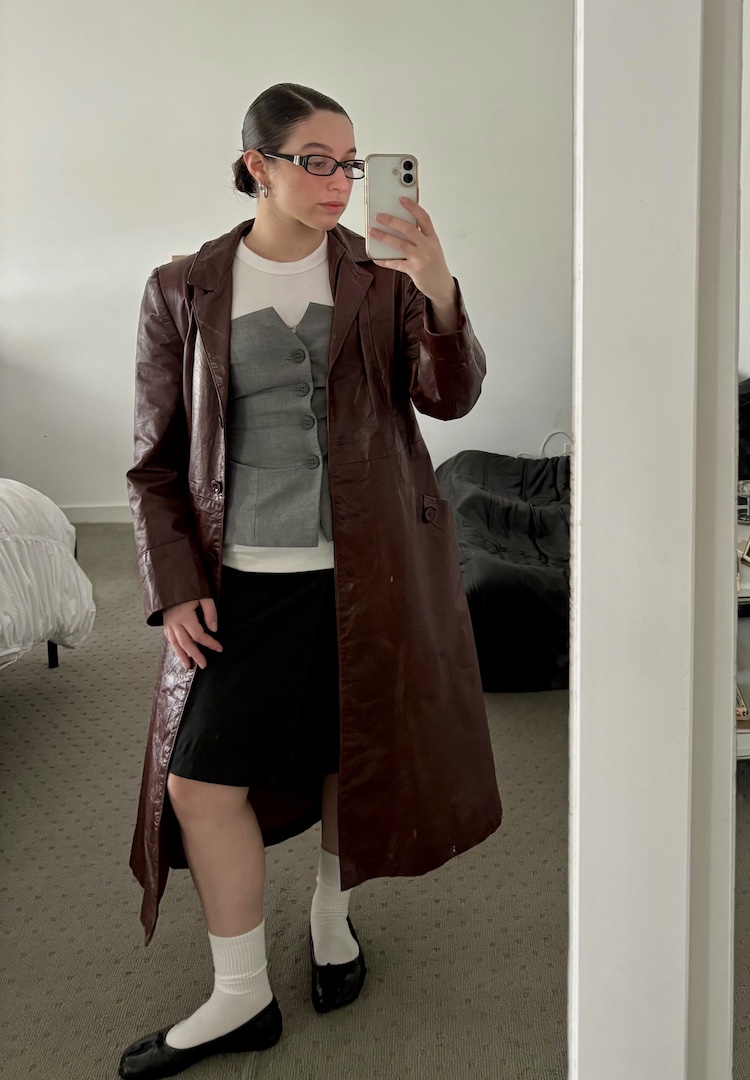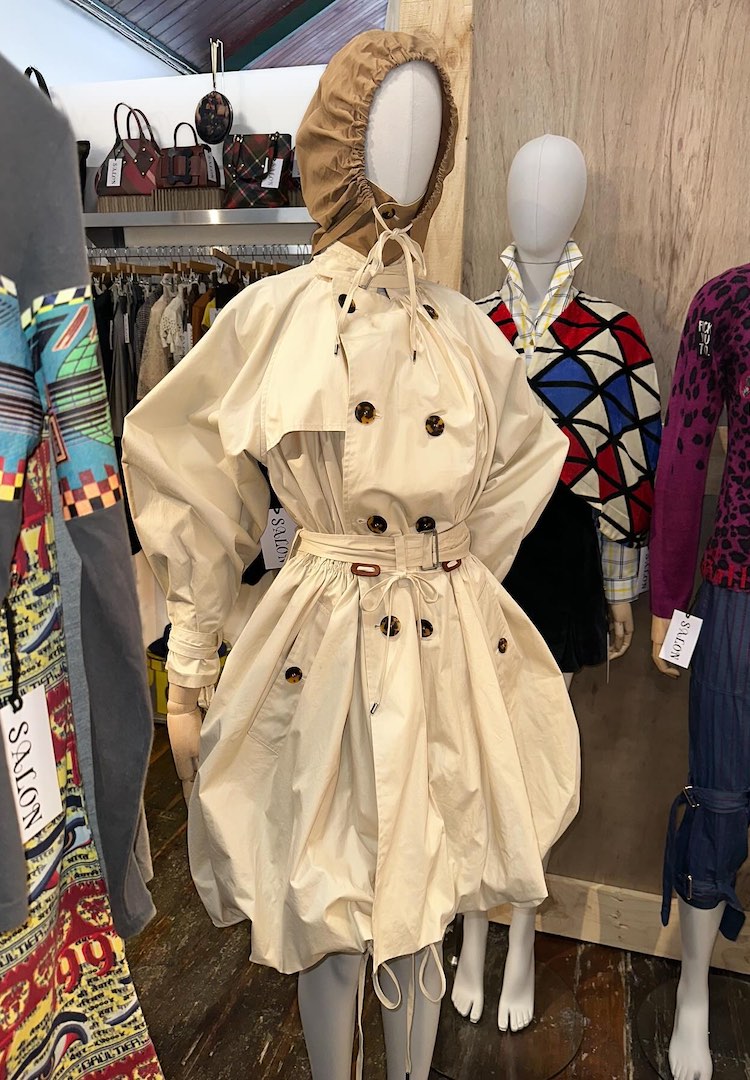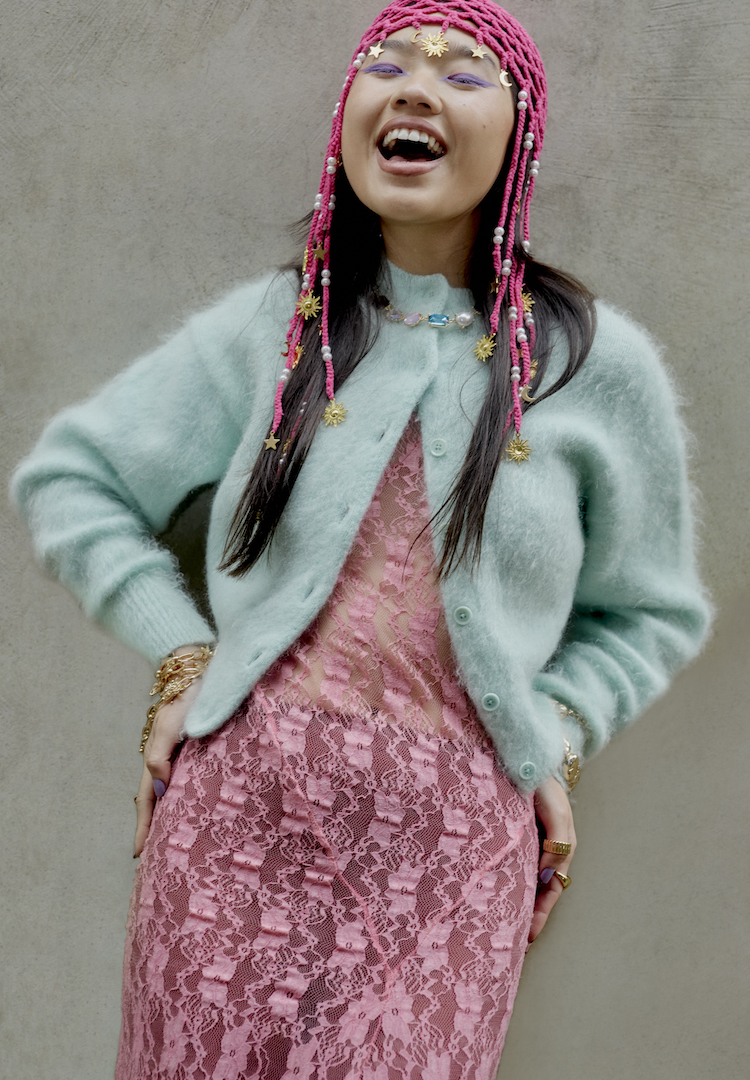A fashion editor’s advice for curating a pre-loved wardrobe that works
IN PARTNERSHIP WITH EBAY
PHOTOGRAPHER – CATHY MARSHALL
STYLIST – MOLLY JOHNSTONE
MAKEUP – MEG McCONVILLE
MODEL – VICKY @ STONE STREET AGENCY
WORDS BY CAIT EMMA BURKE
From a spreadsheet for wardrobe planning to a ‘one in, one out’ policy, these are the tips to know.
The other day, I was clearing out my wardrobe – something I try to do at least once a month – when I realised the vast majority of what I currently own is secondhand. I already knew that I shop predominantly pre-loved, but seeing it all laid out and remembering the unique and varied stories behind each pair of shoes, each jacket, pair of pants, top and skirt was a welcome reminder the best fashion really is pre-loved.
But curating a functional, cohesive wardrobe isn’t always a straightforward process if you’re eschewing new purchases and shopping entirely secondhand. You have to have a beady eye for detail and be prepared to search a little longer (and be smarter about how you’re searching) in order to find pieces that you’ll reach for time and time again.
For more fashion resale advice and stories, head to our Pre-Loved section.
As a fashion editor and writer who’s worked in the industry for over ten years, I’ve learnt some helpful hacks for curating a pre-loved wardrobe that actually works. From wardrobe spreadsheets to eBay’s search bar, I’m hoping this helps out anyone who’s feeling less than pleased with the current state of their wardrobe.
Use a spreadsheet for wardrobe planning
It might seem incredibly type A (probably because it is), but creating a spreadsheet for what you’re looking to add to your wardrobe is a great idea. I’ve written at length about how I do this for Fashion Journal here, but the gist of it is that each season, I create a spreadsheet where I log what I’m looking to add to my wardrobe. I find this helpful for two reasons.
Firstly, it gives me the chance to mull over purchases and keep track of what I’m aesthetically drawn to. I can get very swept up when shopping online, so I like to give myself a chance, whether it’s a few days, a few weeks or a few months, to really consider just how much I like the item and whether it will actually be something I gravitate towards when getting dressed.
As an avid secondhand shopper, I’m often scouring sites like eBay for special vintage pieces or discounted designer. If I find a listing for an item I’ve logged on my spreadsheet that I was going to buy new, I use eBay’s Save for Later feature. That way, I can pop back in a day or two once I’ve decided whether I need the item or not. When an item really grabs me, I use eBay’s Add to Watchlist feature, as it allows sellers to send me offers with custom discounts.
Recently, I had my eyes on, a Fendi skirt, a Lee Mathews shirt and a Maggie Marilyn dress – all new season items I’d been drawn to and added to my spreadsheet. Instead of blowing all my expendable income on these brand new items, I scoured eBay and found pre-loved versions of each. Ultimately, I ended up biting the bullet on two of the items (the third will have to wait for a time when I’m feeling a little more flush). I felt incredibly smug that I was able to find these pieces for a fraction of the cost, and in both cases in brand new condition.
Secondly, my wardrobe spreadsheet helps me be more strategic with what I choose to add to my wardrobe. If I notice I’m adding several striped shirts I want to buy to my spreadsheet, despite having a wardrobe packed full of striped shirts, it makes me reflect on what sartorial need the ones currently hanging in my closet aren’t meeting. Are they not quite the right fit or a slightly off shade of blue that doesn’t pair well with everything else in my wardrobe? If that’s the case, one of those shirts will need to be sold before I can bite the bullet on a new shirt addition.
If I’m consistently adding variations of a similar chunky black dress shoe to the spreadsheet, despite not owning anything in that category, it probably points towards a gap in my wardrobe that I’m eager to fill. Having a spreadsheet like this is a surefire way to get quicker at identifying these gaps and distinguishing whether you’ll actually get wear out of your next purchase.
Nail your online searches
As I’ve mentioned, I spend untold amounts of time trawling eBay for pre-loved fashion. At this point, I have it down to a fine art. Something I’ve found particularly useful is refining my search by size, but I’m mindful of writing Australian-specific sizing, like ‘AU 10’. Sizes vary so much, especially if the item is vintage or has American or European sizing, so I prefer to search for a women’s size medium or size large. I find it brings up items that are anywhere between a size 10 to 14, which is the size range I generally fit into.
When searching for pre-loved pieces to add to your wardrobe, particularly when searching on a platform like eBay, it also pays to have all your measurements written down and saved somewhere. I’m talking full measurements – your bust, hips, waist, shoulder width, seam, as well as more specific ones like shirt and coat sleeve length.
I have these all listed in the notes on my phone, and when I find a gem on eBay, I cross-reference any measurements the seller listed against my own. It’s essential to do this when buying pre-loved, as sizes vary dramatically across labels and eras, and it’s the only near-guaranteed way to make sure an item will fit (and be on high rotation) without trying it on IRL.
It’s also a great idea to save your favourite searches, so you receive email updates when new listings that fit the bill pop up. I’d suggest saving searches for those items that you know will genuinely fill the gaps in your wardrobe (according to your spreadsheet or your own version of a wardrobe inventory). That way, you’re focusing on making your wardrobe as functional and streamlined as possible before you start spending all your time on eBay lusting after high-end accessories and heels that will likely only be worn a handful of times a year.
Know your sellers
Whenever I stumble upon a truly brilliant eBay find, I do some digging on the seller’s profile to check what other items they have listed. Often, I find these sellers are also selling an array of similar styles or labels that appeal to me, so I save their profiles and regularly check out their new listings.
Building up a selection of these go-to sellers – particularly ones you’ve bought from before and had a good experience with – is key to getting the most out of the resale platform. It’s also how I’ve found some of my most conversation-starting vintage and designer pieces that have since become mainstays in my pre-loved wardrobe.
If you don’t love it, list it
A hazard of buying pre-loved items online is that sometimes a piece will arrive and it just won’t work. Whether the fit is awkward, the fabric’s a slightly different shade than you expected or it just doesn’t look right with the rest of your wardrobe, don’t hesitate to relist it on eBay. With such a huge array of customers using eBay, you can be sure there’ll be someone out there looking for what you’re listing – one woman’s ill-fitting trench is another woman’s dream coat, after all.
I find the ‘one in, one out’ policy is a game-changer when trying to curate a pre-loved wardrobe you’ll actually want to wear. As I mentioned earlier, if I want to purchase a new item, I have to sell something currently hanging in my closet first. This practice prevents my wardrobe from becoming packed full of pieces that just aren’t getting enough wear, and it means I can make money to go towards a pre-loved piece I genuinely adore. Plus, it gives the unwanted piece a chance at a second life with a new owner – a new owner who’s likely been trawling eBay searching for exactly what you’ve listed.
To start curating your pre-loved wardrobe, head to eBay.
eBay is not endorsed by or affiliated with any of the brands referenced in this article.

